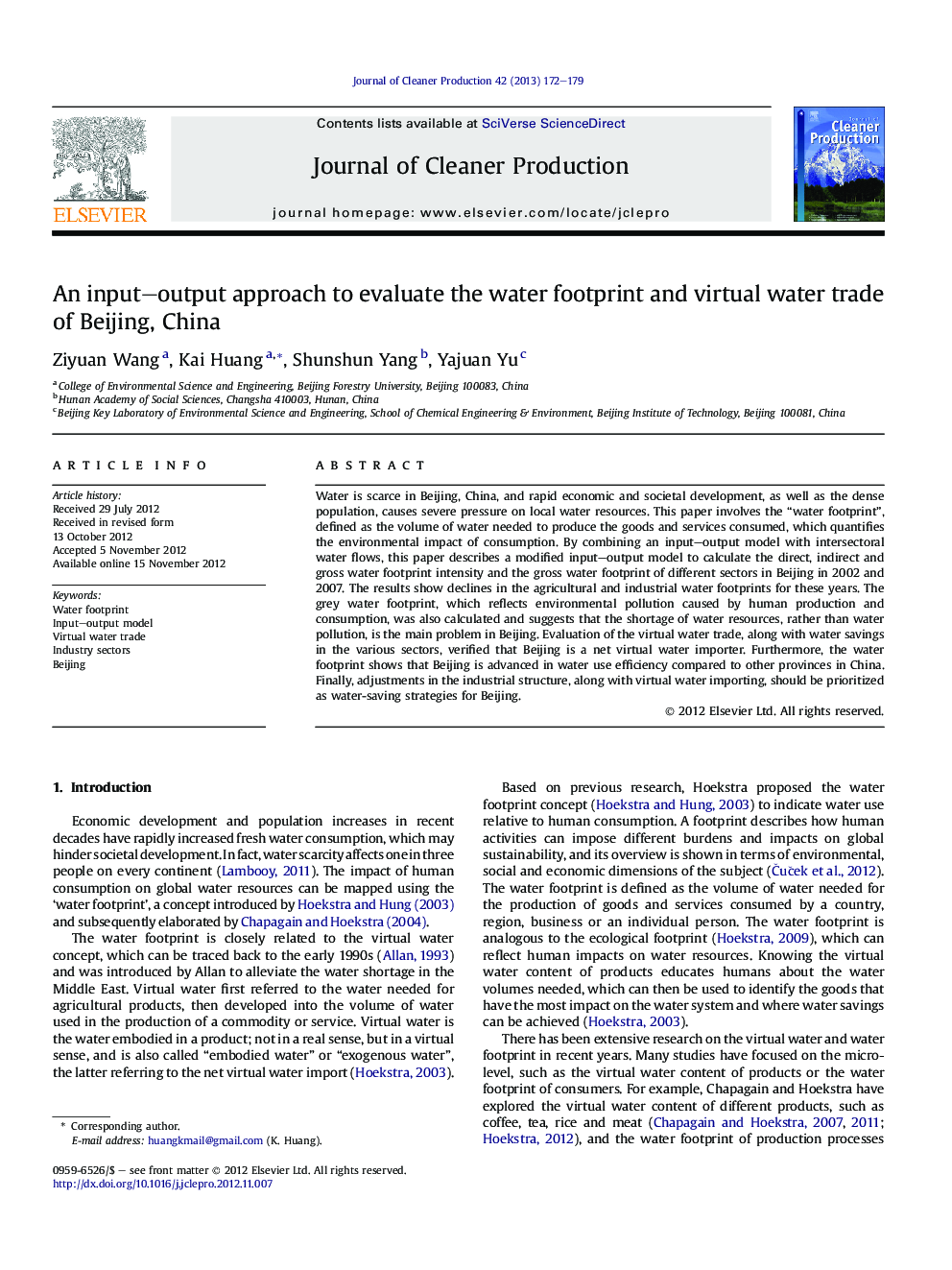| کد مقاله | کد نشریه | سال انتشار | مقاله انگلیسی | نسخه تمام متن |
|---|---|---|---|---|
| 8107682 | 1522204 | 2013 | 8 صفحه PDF | دانلود رایگان |
عنوان انگلیسی مقاله ISI
An input-output approach to evaluate the water footprint and virtual water trade of Beijing, China
ترجمه فارسی عنوان
یک روش ورودی / خروجی برای ارزیابی رد پای آب و تجارت آب مجازی پکن، چین
دانلود مقاله + سفارش ترجمه
دانلود مقاله ISI انگلیسی
رایگان برای ایرانیان
کلمات کلیدی
رد پای آب مدل خروجی ورودی، تجارت آب مجازی، بخش های صنعت، پکن،
ترجمه چکیده
آب در پکن، چین، و توسعه سریع اقتصادی و اجتماعی، و همچنین جمعیت متراکم، فشار شدید در منابع آب محلی را کم می کند. این مقاله شامل یک پاکت آب است که به عنوان حجم آب مورد نیاز برای تولید کالاها و خدمات مصرف شده تعریف می شود که تاثیرات زیست محیطی مصرف را تعیین می کند. با ترکیب یک مدل خروجی ورودی و خروجی با جریان آب داخل بخش، این مقاله یک مدل ورودی-خروجی اصلاح شده برای محاسبه شدت عوارض مستقیم، غیر مستقیم و ناخالص آب و میزان آب ناشی از بخش های مختلف در پکن در سال های 2002 و 2007 را نشان می دهد. نتایج نشان می دهد در این سالها در زمینه های کشاورزی و صنعتی آب کاهش می یابد. محدوده آب خاکستری، که نشان دهنده آلودگی محیط زیست ناشی از تولید و مصرف انسان است، نیز محاسبه شده و نشان می دهد که کمبود منابع آب، به جای آلودگی آب، مشکل اصلی در پکن است. ارزیابی تجارت آب مجازی و صرفه جویی در مصرف آب در بخش های مختلف، تایید شده است که پکن وارد کننده آب مجانی آب است. علاوه بر این، اثرات آب نشان می دهد که پکن در بهره وری استفاده از آب در مقایسه با استان های دیگر در چین پیشرفت کرده است. در نهایت، تنظیمات ساختار صنعتی، همراه با وارد کردن آب مجازی، باید به عنوان استراتژی های صرفه جویی در مصرف آب برای پکن تعریف شود.
موضوعات مرتبط
مهندسی و علوم پایه
مهندسی انرژی
انرژی های تجدید پذیر، توسعه پایدار و محیط زیست
چکیده انگلیسی
Water is scarce in Beijing, China, and rapid economic and societal development, as well as the dense population, causes severe pressure on local water resources. This paper involves the “water footprint”, defined as the volume of water needed to produce the goods and services consumed, which quantifies the environmental impact of consumption. By combining an input-output model with intersectoral water flows, this paper describes a modified input-output model to calculate the direct, indirect and gross water footprint intensity and the gross water footprint of different sectors in Beijing in 2002 and 2007. The results show declines in the agricultural and industrial water footprints for these years. The grey water footprint, which reflects environmental pollution caused by human production and consumption, was also calculated and suggests that the shortage of water resources, rather than water pollution, is the main problem in Beijing. Evaluation of the virtual water trade, along with water savings in the various sectors, verified that Beijing is a net virtual water importer. Furthermore, the water footprint shows that Beijing is advanced in water use efficiency compared to other provinces in China. Finally, adjustments in the industrial structure, along with virtual water importing, should be prioritized as water-saving strategies for Beijing.
ناشر
Database: Elsevier - ScienceDirect (ساینس دایرکت)
Journal: Journal of Cleaner Production - Volume 42, March 2013, Pages 172-179
Journal: Journal of Cleaner Production - Volume 42, March 2013, Pages 172-179
نویسندگان
Ziyuan Wang, Kai Huang, Shunshun Yang, Yajuan Yu,
